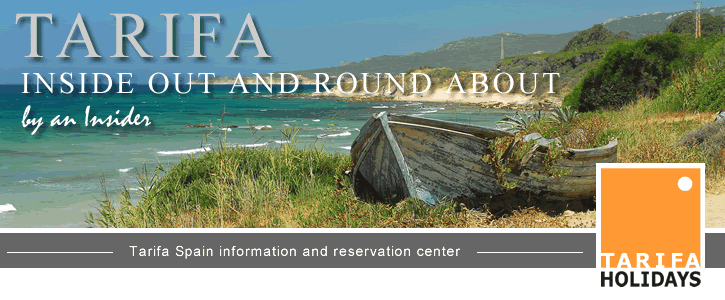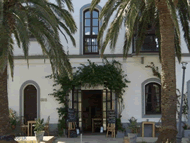Tarifa inside out and round about - A brief history on Tangier Morocco

A brief history on Tangier Morocco
Tanjah (Anglicised as Tangier) is an ancient Phoenician town, founded by Carthaginian colonists in the the 5th century BC. It came under Roman rule in the 1st century BC, in the 5th century AD Vandals swept across North Africa, a century later it became part of the Byzantine empire, and eventually came under Arab control in 702.
In the later Middle Ages the chequered history of this city continued, being held by the Portuguese from 1471 to 1580 (the Portuguese fortifications in the nearby delightful small coastal town of Asilah should be visited!), then by Spain, then by Portugal again, until in 1661 it was given to Charles II of England as part of the dowry of the Portuguese Infanta Catherine of Braganza. In 1679 Sultan Moulay Ismail of Morocco imposed a crippling blockade on Tangier Morocco ultimately forcing the English to withdraw in 1684, but not before they destroyed the town and its harbour facilities.
--- Tangier Morocco - A brief history ---
The town gradually declined until by 1810 the population was only some 5.000.
Note: in 1821 the first property to be aquired by a foreign government was the Legation Building - a gift to the U.S. from Sultan Moulay Suliman. This is well worth a visit today - it is an oasis of calm in the middle of the busy souk, and houses an interesting art collection and the Forbes Collection of tin soldiers set up in battle formation.
Tangier Morocco ’s geographic location made (and makes!) it a centre of European diplomatic and commercial rivalry in the 19th and 20th centuries. (and its rich fishing waters remain a source of dispute between the Moroccan and Spanish fishing fleets in 2007).
At the beginning of the 20th century it had a population of about 40,000, including 20.000 Muslims (with Berbers predominating over Arabs - Berbers form some 70% of the total population of Morocco), 10.000 Jews and 9.000 Europeans of which 7.500 were Spanish. Morocco has remained a tolerant country, and although there are now far fewer Jews living there, they are tolerated. The synagogue and the catholic church in Tangier Morocco are built in the same area as a major mosque.
--- Tangier Morocco - A brief history ---
The whole country came increasingly under French influence and in 1912 was effectively partitioned between France and Spain, Spain largely occupying the north, and thus also Tangier Morocco. Tangier was made an international zone in 1923 under the joint administration of Spain, France and Britain, joined by Italy in 1928. After a period of Spanish control until the end of World War II in 1945, Tangier was reunited with the rest of Morocco which regained full sovereignty in 1956.
Tangier
Morocco again fell into a state of poor repair from which it is only now
recovering given the personal interest of the new young King and an effective
mayor who was formerly the mayor of Marrakech. Tangier is building a new
major container terminal for shipping directly opposite Tarifa, has several
new major hotels (international chains), is reconstructing a boulevard,
has a new train station. At the same time it preserves its local character
with a busy souk and the many colourful figures to be seen there, including
the Berber women in their local dress (and hats) and the water sellers.
More about Tangier Morocco
![]() Tangier
Morocco
Tangier
Morocco
![]() A
brief history on Tangier
A
brief history on Tangier
![]() My
opinion on Tangier
My
opinion on Tangier
![]() Guided
tours Tangier and Asilah
Guided
tours Tangier and Asilah
 More
on Morocco
More
on Morocco
 More on Tarifa Inside Out and Round About
More on Tarifa Inside Out and Round About
![]() Inside
Inside
![]() Outside
Outside
![]() Round
About
Round
About
![]() Further
Afield
Further
Afield
About Zoë and her guesthouse
 Zoë
is the owner of Guesthouse Dar Cilla which is unique of its sort in Tarifa.
It is located on the outskirts of the old town within the old 12th century walls.
'Dar' is an Arabic word for a town house in which a series of suites are grouped
around a central courtyard. Each suite is fully independent, but there is a
pleasant air of 'sociability' and you will meet Zoë and fellow guests on
the roof terrace over a glass of wine.
Zoë
is the owner of Guesthouse Dar Cilla which is unique of its sort in Tarifa.
It is located on the outskirts of the old town within the old 12th century walls.
'Dar' is an Arabic word for a town house in which a series of suites are grouped
around a central courtyard. Each suite is fully independent, but there is a
pleasant air of 'sociability' and you will meet Zoë and fellow guests on
the roof terrace over a glass of wine.